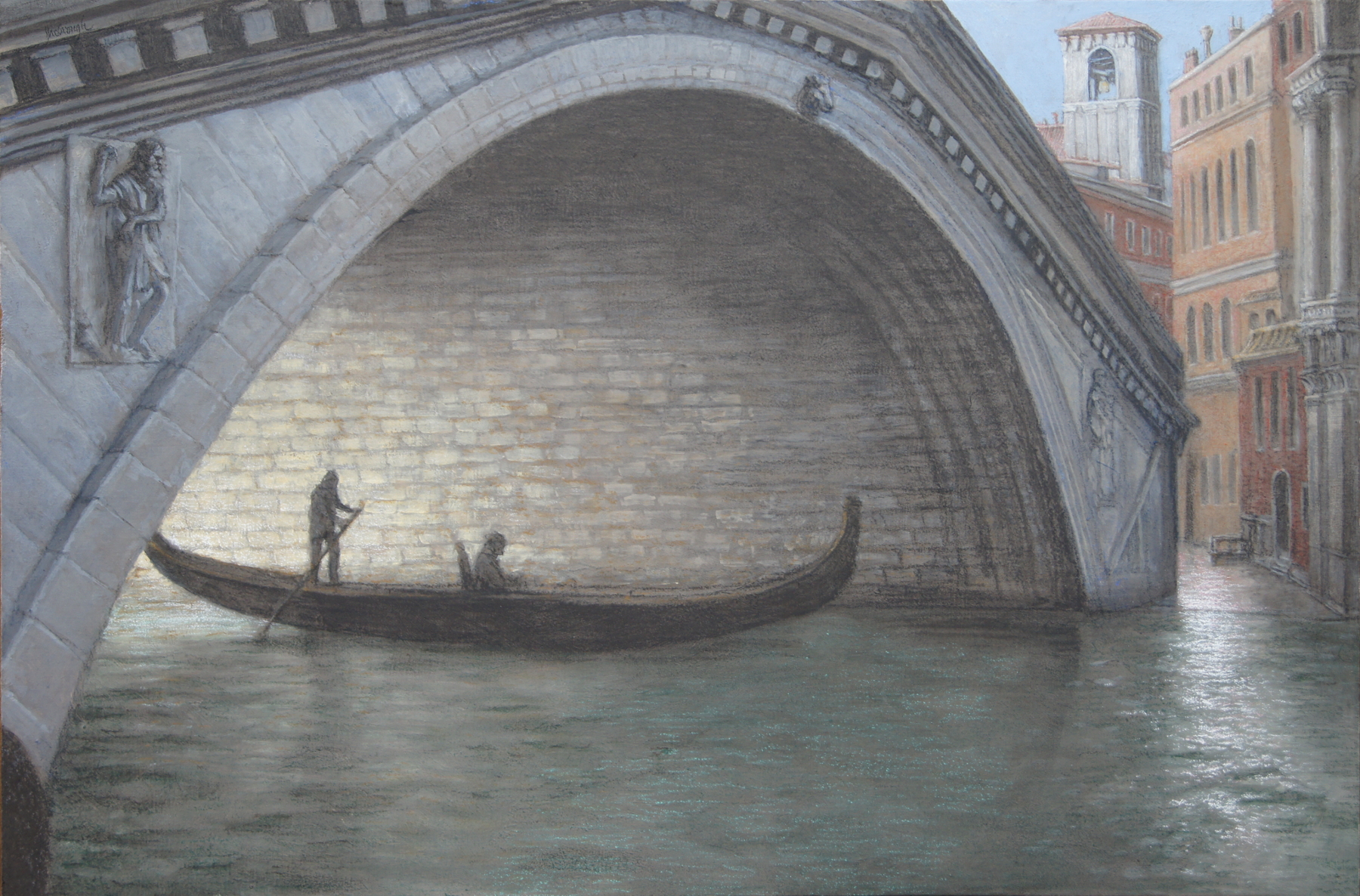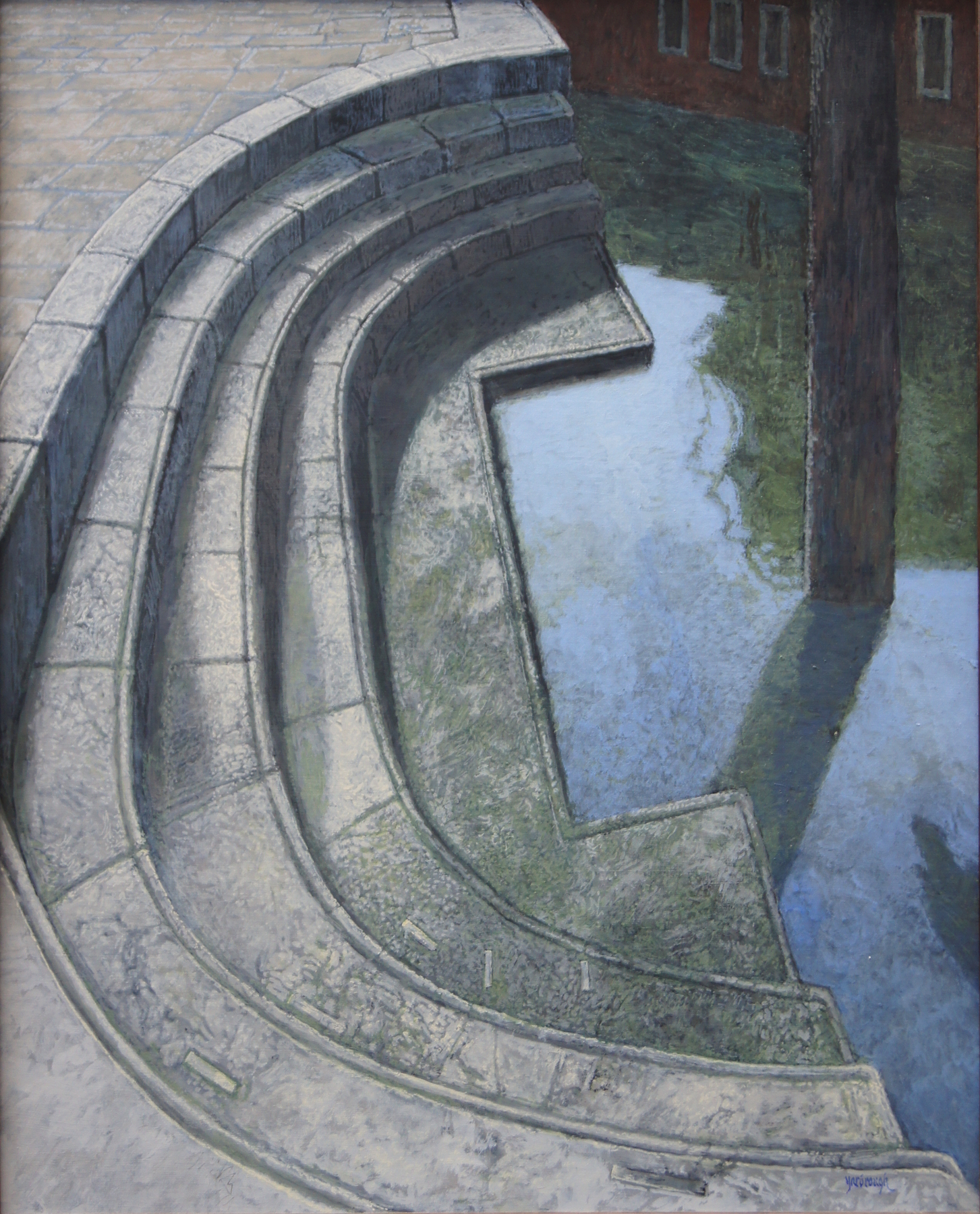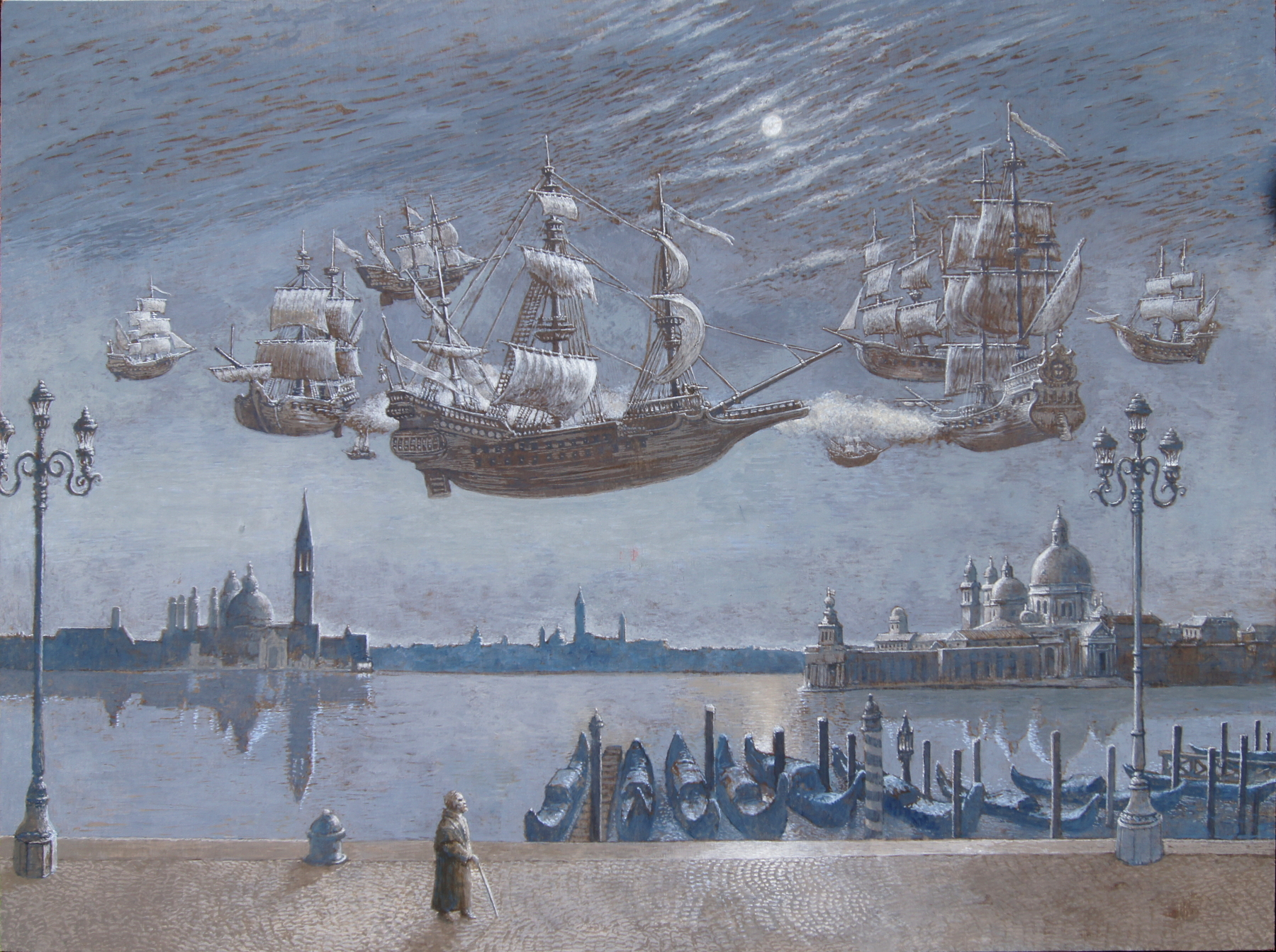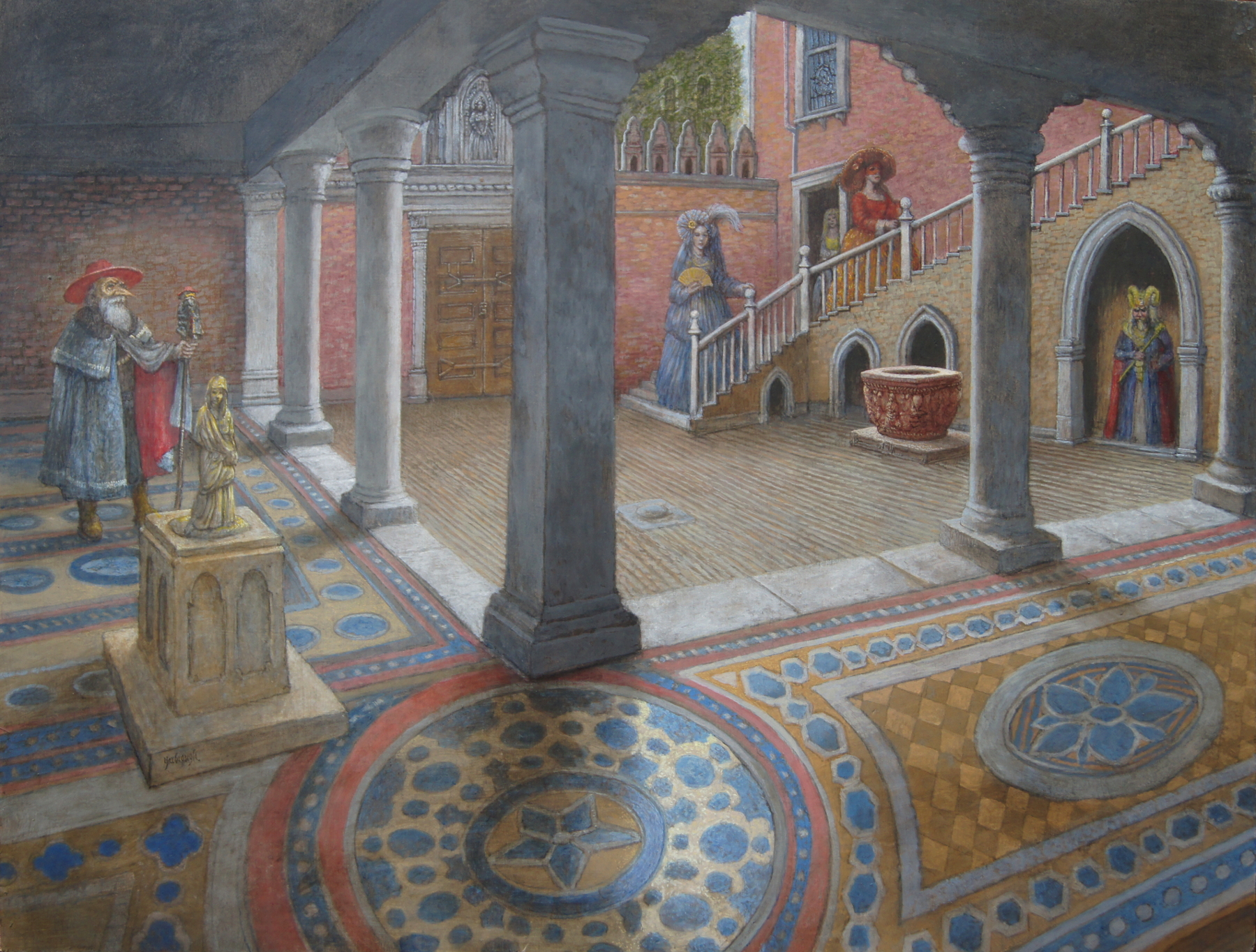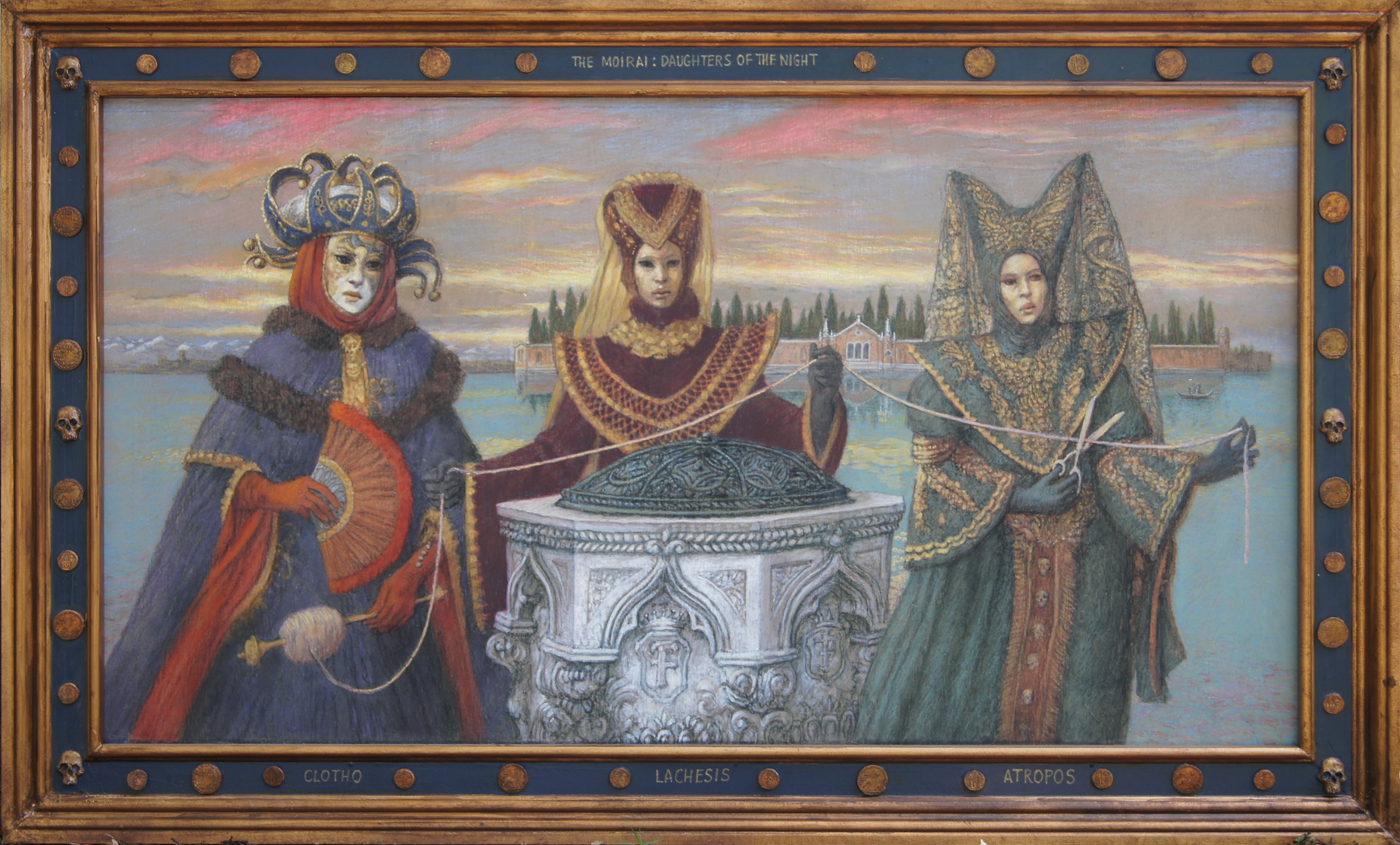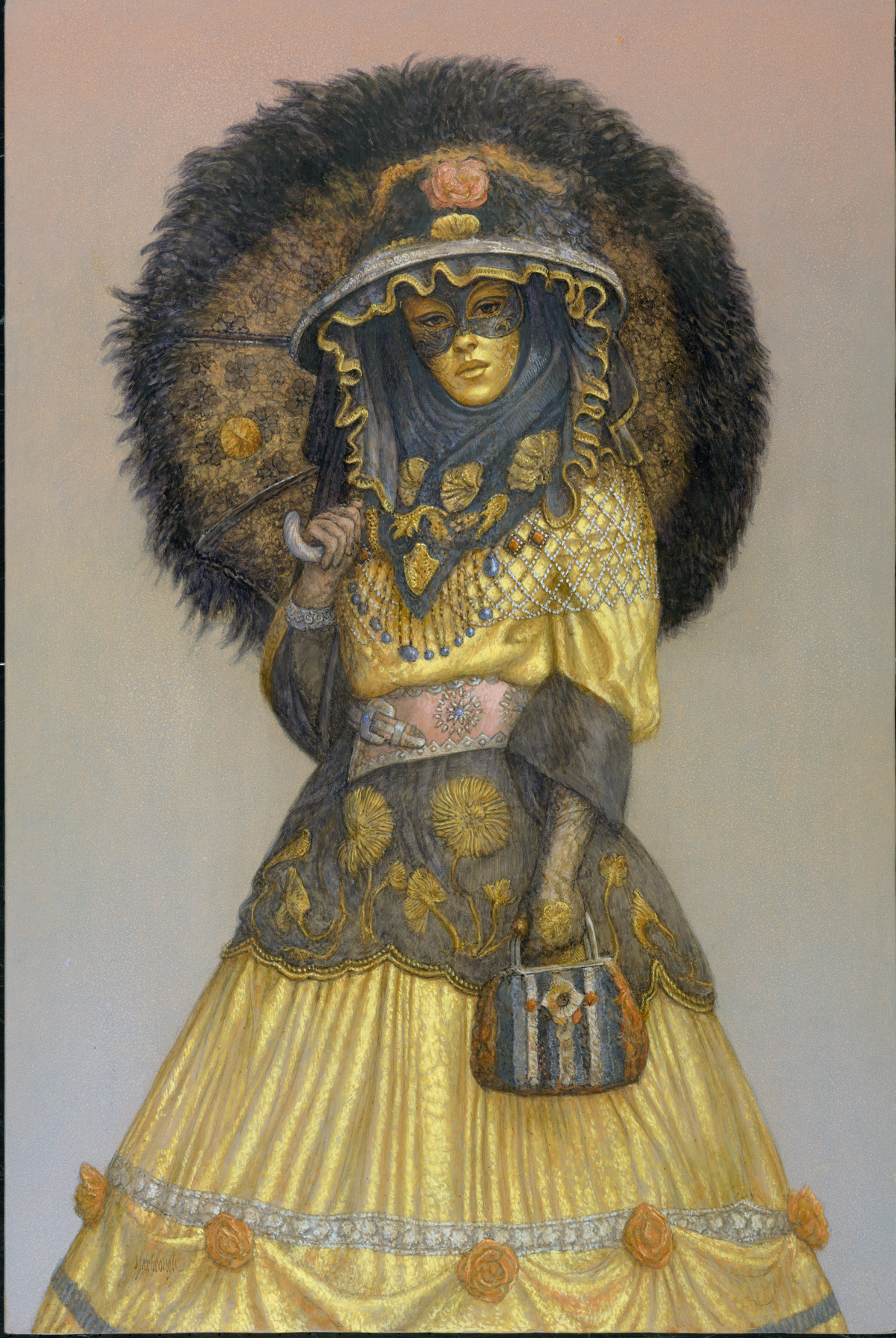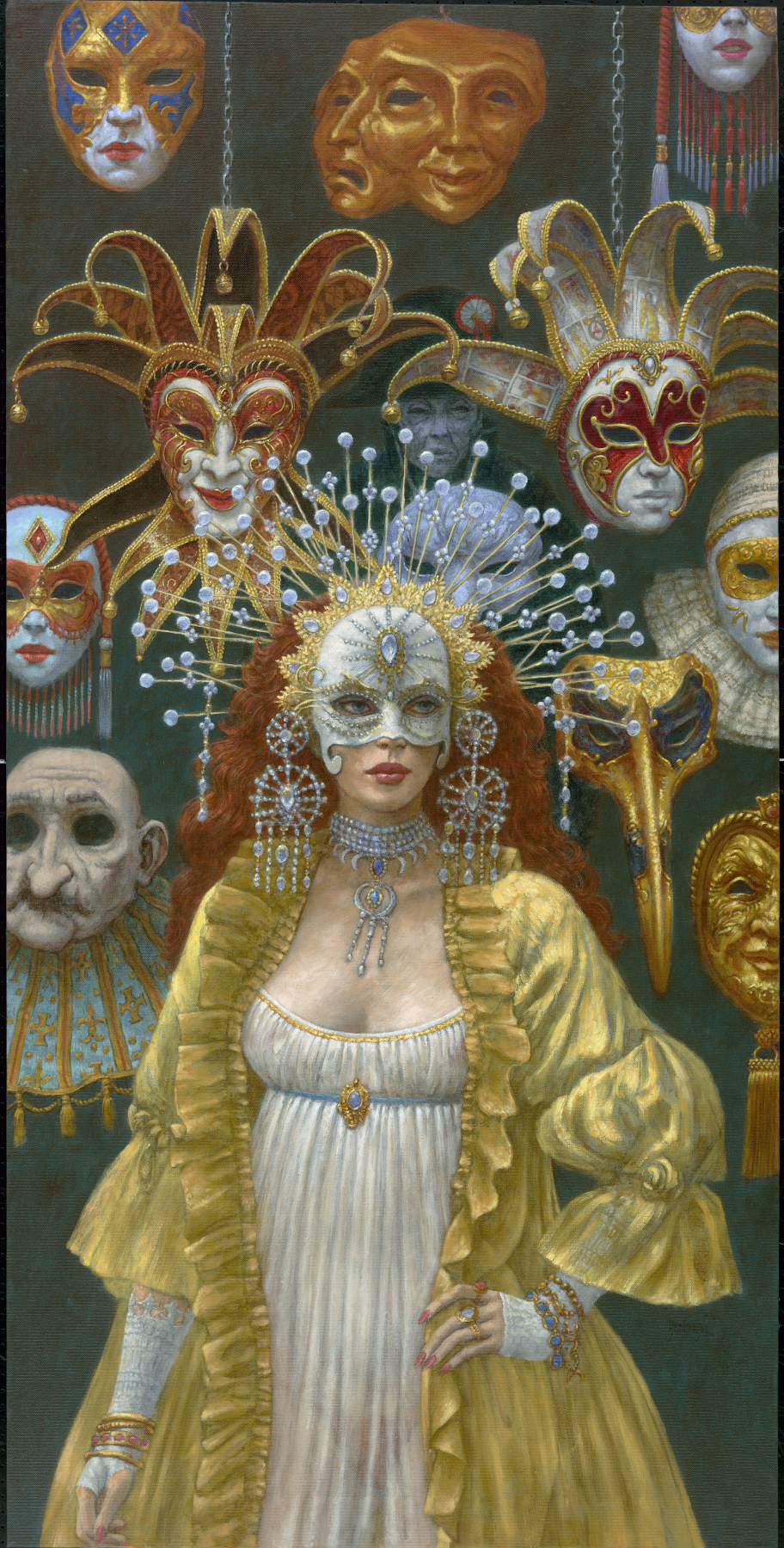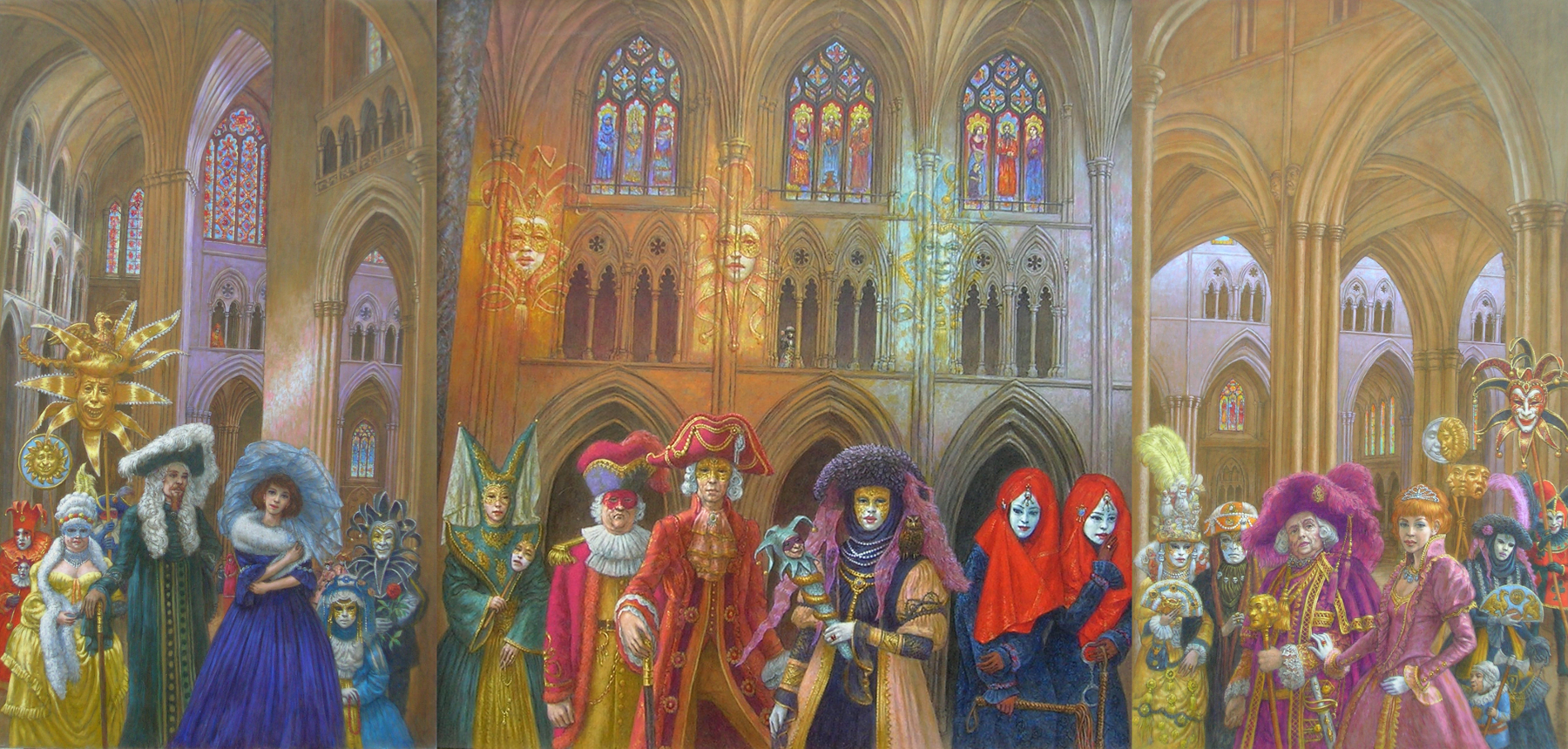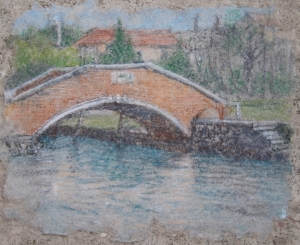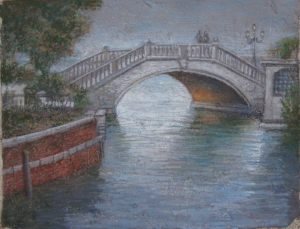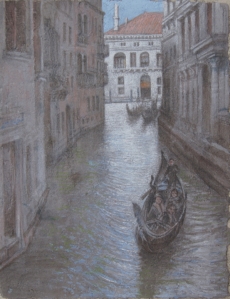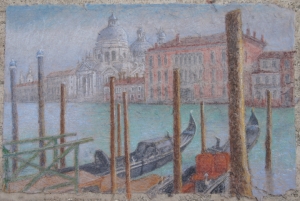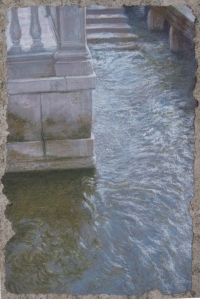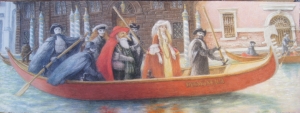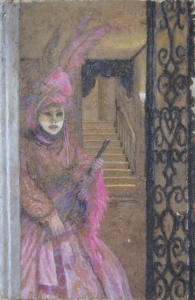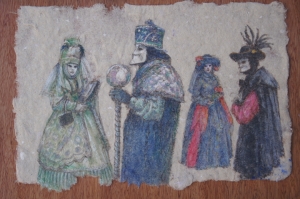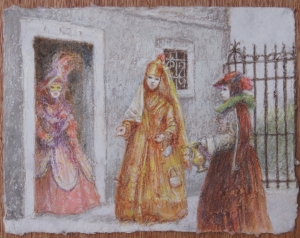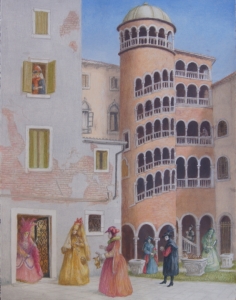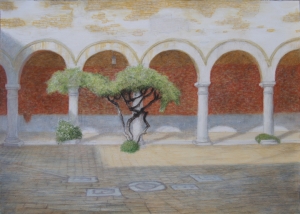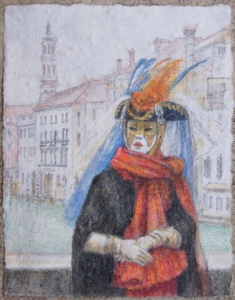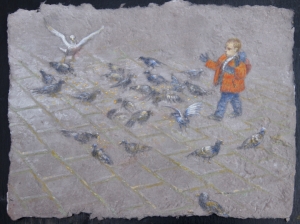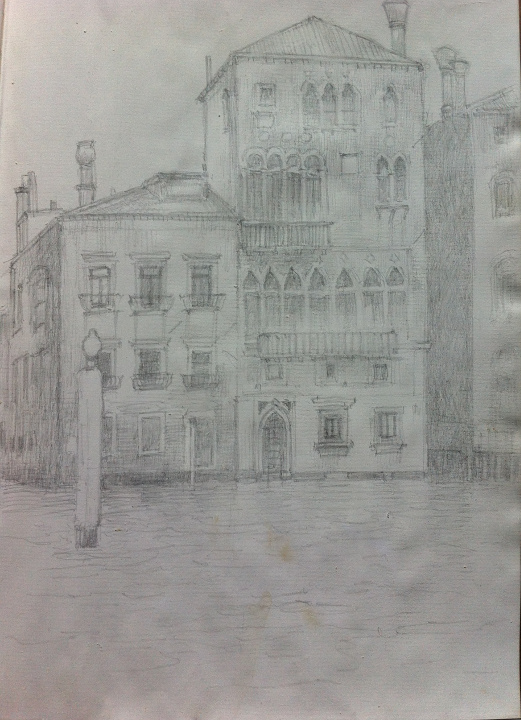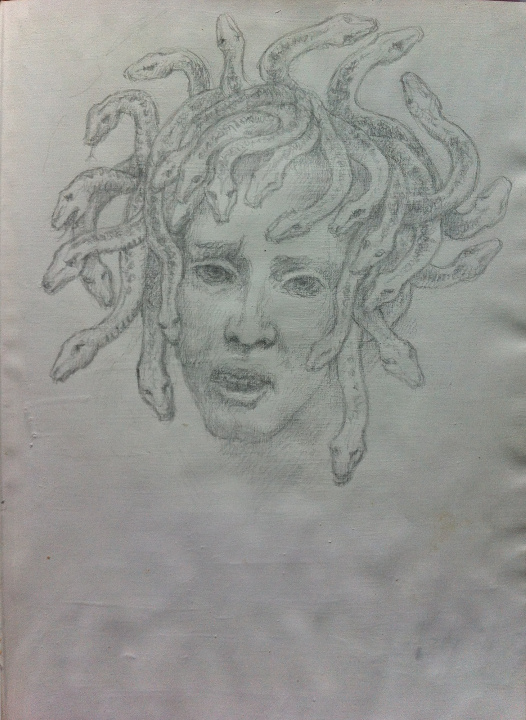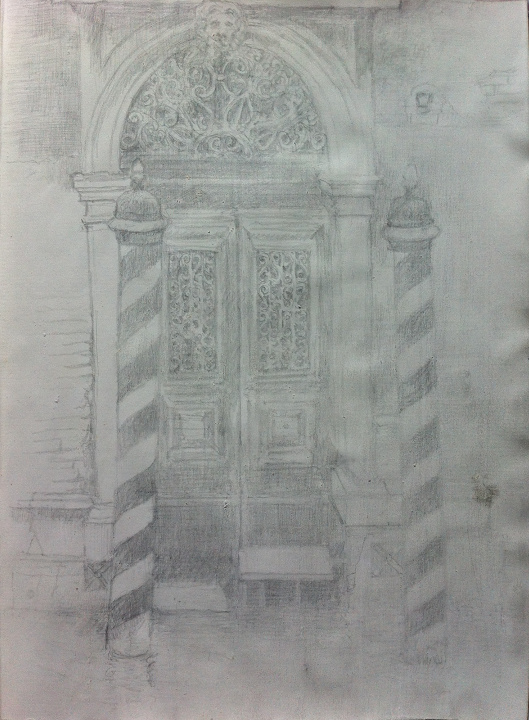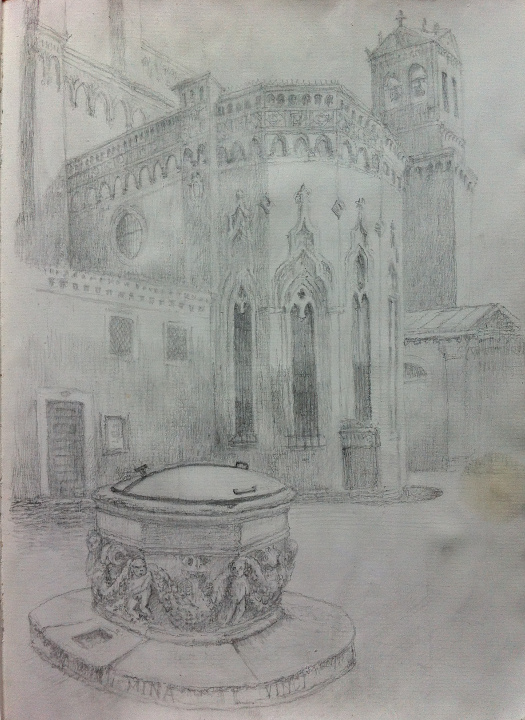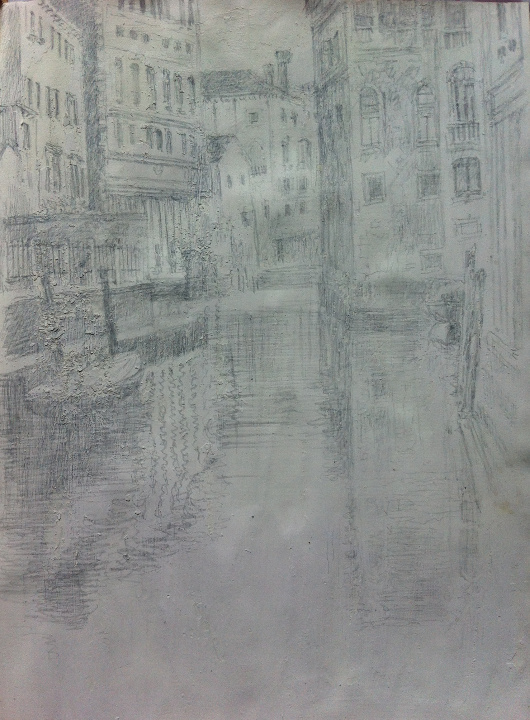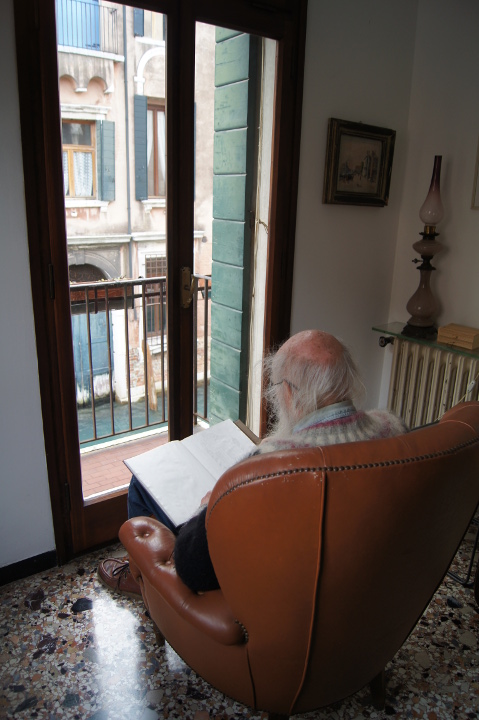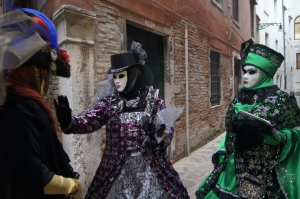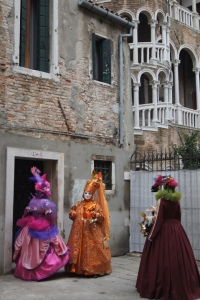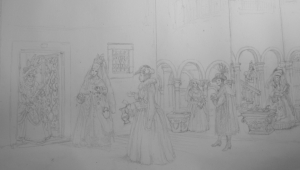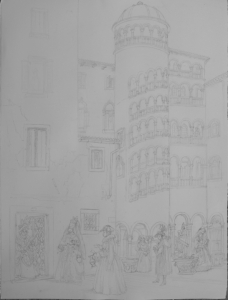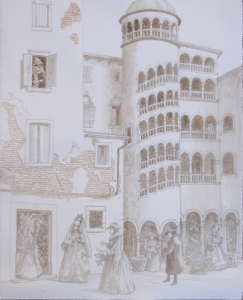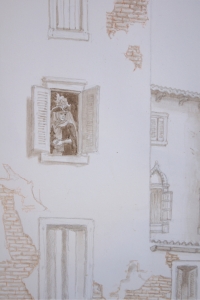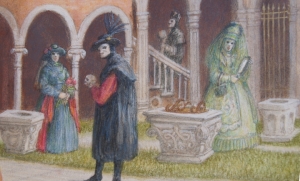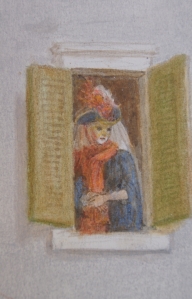With Jim Yarbrough

Jim’s first video is not actually his first. Back in 1979 or so, someone made a video of him doing art in his studio. (Not the current studio.) There’s no sound, it’s on 8mm film, and it runs for 9 minutes. We have the only copy, I’m not going to digitize it. And back a couple of years ago Jim decided he wanted to do a video of his process for painting a triptych, so I set up the camera and did a time lapse of the whole process, including filming of him painting in realtime, and capturing some of his intended monologue. But because I had too much trouble getting the clips off my phone, nothing ever happened with it, so oh well. This year he decided he wanted to show people how to make real rabbit skin glue gesso, something he’s been doing for decades. So we did. And tho it took forever (two months) to edit and narrate it, it’s finished, and it’s up on youtube, and this blog post is about the process, a description of what you see in the video, and a list of suppliers so you can make your own gesso.
Ingredients

you’ll need to have access to a stove, a double boiler, a nice soft big brush, and the following ingredients – water, rabbit skin glue, marble dust or chalk, white pigment (titanium or zinc white), and kaolin clay.


(We got our double boiler many years ago in a thrift store)
Process
Put an inch or two of water in the bottom pot of a double boiler, and set it on the stove to boil. Put a quart of water into the top pot, and set it on the bottom pot to warm up.

Once it’s good and hot, turn off the heat under the double boiler. Into the top pot, stir in 5 heaping tablespoons of rabbit skin glue crystals. Stir until dissolved, and let the pot sit out for several hours or overnight. It takes some time for the glue to dissolve and thicken.

Once cooled and thickened to a consistency somewhere between milk and hot chocolate, measure out and stir in the various fillers. The amounts can vary considerably, and to your taste. As always, experimenting with your materials until you know them is essential for making art that will last.
Here’s the recipe Jim used to make the gesso in the video.
5 heaping tablespoons of marble dust. marble dust, chalk, whiting, calcium carbonate. The marble dust Jim used for this demonstration was not as fine as many other bags of marble dust we’ve bought. It was coarse enough that he found it ideal for use as a surface for pastel paintings. I think most people, when they use rabbit skin glue to gesso a surface, will go to great lengths to end up with a very smooth surface. For oil paintings and watercolors especially. Lengths like sanding and scraping with a razor blade. Jim doesn’t do this, because he just wants a surface to paint on. But everybody has their own ways in this, because gesso goes back to medieval times.
3 heaping tablespoons of pigment, usually white. In this case, Jim is using zinc, probably because he’s running out of titanium white (I’ll order more soon). You can use either white; titanium is more opaque than zinc and so it’s better for this purpose, since you’re looking to cover as well as size the painting surface. Jim frequently uses a toned ground, which is just a matter of mixing in some dry pigment to taste, or even using premixed tube paint. Colors used for toned grounds can be raw umber, or a mix of raw umber and ultramarine, or any lightish grayed color, like raw sienna or even a green.
4 heaping tablespoons of kaolin clay. Jim loves using clay in his mixtures. His most popular post is “How to make your own clayboard“. Kaolin is used in cosmetics and food and drugs. You can dig it right out of the ground if you’re near a deposit (yes, we have some hand-dug kaolin).
For those who don’t have a double boiler in your studio, there are lots of workarounds. And here are a few double boilers, because they’re just so damned handy in the kitchen.
And if you don’t already have a big soft brush to apply your gesso, then you should get one, because a stiff bristle brush will leave marks, and a small brush will take forever. I’d get at least a 1″ brush. But Jim is using a goat hair brush – very soft hair – called a hake brush. This one is 3 inches wide.
Here are some sources for these materials:
rabbit skin glue – it seems to be thin on the ground these days. last year there was a shortage of many glues, due to supply chain issues. Anyway, I found it available at dick blick, natural pigments, amazon, and ebay, and of those, I would trust the actual art supply store
marble dust – another hard to find product. I’m not sure if this is linked to a shortage of quarried marble for headstones, due to the rona. natural pigments has it, tho, and you have to be thorough on amazon and ebay because you don’t want coarse marble dust unless you’re making pastel ground, and so on
white pigment – here are links to titanium white suppliers. You can check for zinc white at these places, if you prefer it. Again, natural pigments has the best source, tho amazon has it too, and so does ebay. but you have to be careful, again, to get the right formulation, the right size particles, and other details that take research. suppliers of art supplies have already done a lot of the research for you, so unless you have some experience, or can research until you know what you’re looking at, it’s best to avoid all purpose websites that sell everything
kaolin clay – except when it comes to things that are in themselves all purpose. Like kaolin. It’s used in everything, from art to science. The bulk of kaolin is used in papermaking, but it really is everywhere. So you can readily find it on ebay and amazon, where you’ll see it advertised as a cosmetic. But natural pigments also carries it. We’ve gotten it from every source.
Process
One day in late July, Jim turned to me and said, “I’ve been thinking about making a video on how to make gesso.” And me, not knowing how many dozens of videos are already out there, said, “Sure thing.”
But we’d been down that road before.
This time we called in the cavalry. Our good friend Margaret Dyer, a noted painter and teacher, and someone who makes bunches of videos about how to paint in pastel and oil. She happened to be between workshops and demonstrations, so she came over to Jim’s studio, and we spent a morning filming. She mostly filmed, I took snapshots and filmed from different angles, and – most importantly – took notes.

And then – even better – Margaret took the videos home and strung them together, and did a little voiceover, all just to show me what could be done with the material. So I took it from there, and basically refilmed the entire thing. It was fun. Jim mixed up his gesso, and then painted his panel layer after layer, until it was a nice smooth white surface. It took days to get all the coats on, with me filming and snapping photos the whole time. Except for one afternoon when he neglected to tell me he was going down to put on another coat. All I’ve got for that coat is a couple of after pictures.

Be that as it may. Here’s Jim’s first coat of gesso, the board gleaming wet. You can see even in this badly lit, oblique view, that it’s streaky af.

And when it dries it’s just as ugly. Someone remind me why we can’t put on thicker coats of gesso (hint: they crack)

This is what it looks like close up. Those individual grains are actually bits of marble that weren’t ground as fine as they could have been. This will leave a sandpaper texture on the board, and Jim will consequently use it for his pastel paintings.

Something that’s always fun when you’re layering on paint is a thing call creep. The second coat is creeping over the first one, beading up, refusing to make an actual coat that clings together. This could be troublesome for various reasons, but in this case it doesn’t matter at all.

But I think it looks cool, and there are situations where you like the effect of beading up. Nice texture.

This is Jim at the end of his second coat of gesso. Almost time for coffee.

You can start to see some buildup, even with only two coats. The pitting is a different phenomena from the bumps, btw.

And this is the third coat. Still way streaky, but then it’s early. Some artists use a dozen or more coats of gesso to prime their panels.

More crawling. I tried, you can make the paint film adhere if you go over it with your brush, but it’s okay because you’re going to go over it again with fresh gesso when this coat dries.

The third coat is on. You’ll notice that Jim does not tend to vary the direction of his stoke much at all, and it really shows. You’re supposed to go at least 90 degrees to the coat before, but with a bit 3×4 foot board, there’s not that much room to maneuver, and he is just going to keep adding more coats until he can’t see any of that streaking, which is the point.

Third coat dry. Less streaky, but not really.

The fourth coat going on now.

Fourth coat closeup showing bubbles now, more than sandy grains. You might normally sand each coat or two to keep the bubbles from mattering. They tend to make absorbent pools that catch the paint, but again, Jim doesn’t care about that.

And that’s the last coat of the day. Let that dry, and come back and do more in the morning. We’re approximately halfway done.

Next day, a closeup shot to show how, even tho it’s still streaky, it’s mostly covered, just not evenly enough.

And a closeup shot showing a gradually thickening layer of gesso pooling on the surface.

More crawling. I like it here because it’s harmless. If it happened with the paint layer, I’d be tripping out.

Another coat close up, could be 5 or 6 at this point.

And also dry and getting fairly thick now. You can’t see streaking anymore

This is the seventh coat. It’s almost done. I can’t tell the difference, but Jim thinks just one more coat will do it.

This is the panel in closeup, with all sorts of variations in the brushwork even tho he didn’t try to do it that way. It makes an interesting surface for pastel, and he’ll even paint something with egg/oil tempera at some point, because he likes a rough surface. Otherwise, having hit it with a sanding block every coat or two, it would be very smooth and have the same character all over the board.

This is the 7th coat, finished and dry

So now Jim is putting the last coat on, it’s late in the afternoon and his back is tired from all these broad strokes. The board is sufficiently covered that it looks white; the wood is now protected from whatever he chooses to put on it, and he’ll be ready to go once it’s dry.

Not so many craters now, you’ll notice. Lots of bumps, because he’s got very sandy marble dust, but the craters have all filled in. And there’s no sign of creeping in the layers.

And that’s what it looks like when it’s done. Just a plain white sheet of wood, ready for the paint. It took three days, and about 2-3 per day, and he had enough gesso to do half of it, so had to make two batches.
+++++
The panel has long since been coated out and ready for painting, and I was still working on post production for the video. Boy what a lot of work goes into editing and narration. And boy can I not stand the sound of my own voice. I had to download (and learn) two different software programs in order to finish the video. They’re both straightforward for complex audio and video manipulation programs, and I stuck to only the very basic techniques, but still managed to get stuck every time I had to do something different. But gradually I learned how to cut pieces out of video clips, and how to record and discard the same voiceover snippet over and over again.
The day came when I finished stringing together all the clips of Jim making gesso and then putting the first coat on a masonite panel. And I’d buckled down and taped all the narration, and stuck it into the video editing program, and it was time to test it out, see how it looked and sounded. Because I was having some issues getting the playback to run smoothly. Every time it hit a transition between one clip and another, the video would slow way down, and the audio would break up and stutter. So I wanted to see how it worked as a video. And knowing nothing of how video works, I went along with the presets, and started the export.
It was like molasses going uphill in February. So I left the computer running and went to do something else. It was a while before I noticed that there was no editing program up on my screen. I checked, but there was no freshly minted video file in the folder. So it crashed. I rebooted, started the program up again, and sat there while it worked on exporting the video, and watched it crash this time. At this point I RTFM and looked up the proper settings for a youtube video, and tried it again.
Okay, that worked: I got a file. But not so fast. It played when I clicked on it, but it was a screen full of lines and no audio. So, no. Experimentation and research continued.
And continue it did until I finally got the video to export. It’s still got some trouble, and we are by no means looking like professional video creators at this point, but here it is. I’ve loaded it up to a new channel on YouTube, and you can find it here
And continue it did until I finally got the video to export. It’s still got some trouble, and we are by no means looking like professional video creators at this point, but here it is. I’ve loaded it up to a new channel on YouTube, and you can find it here

















































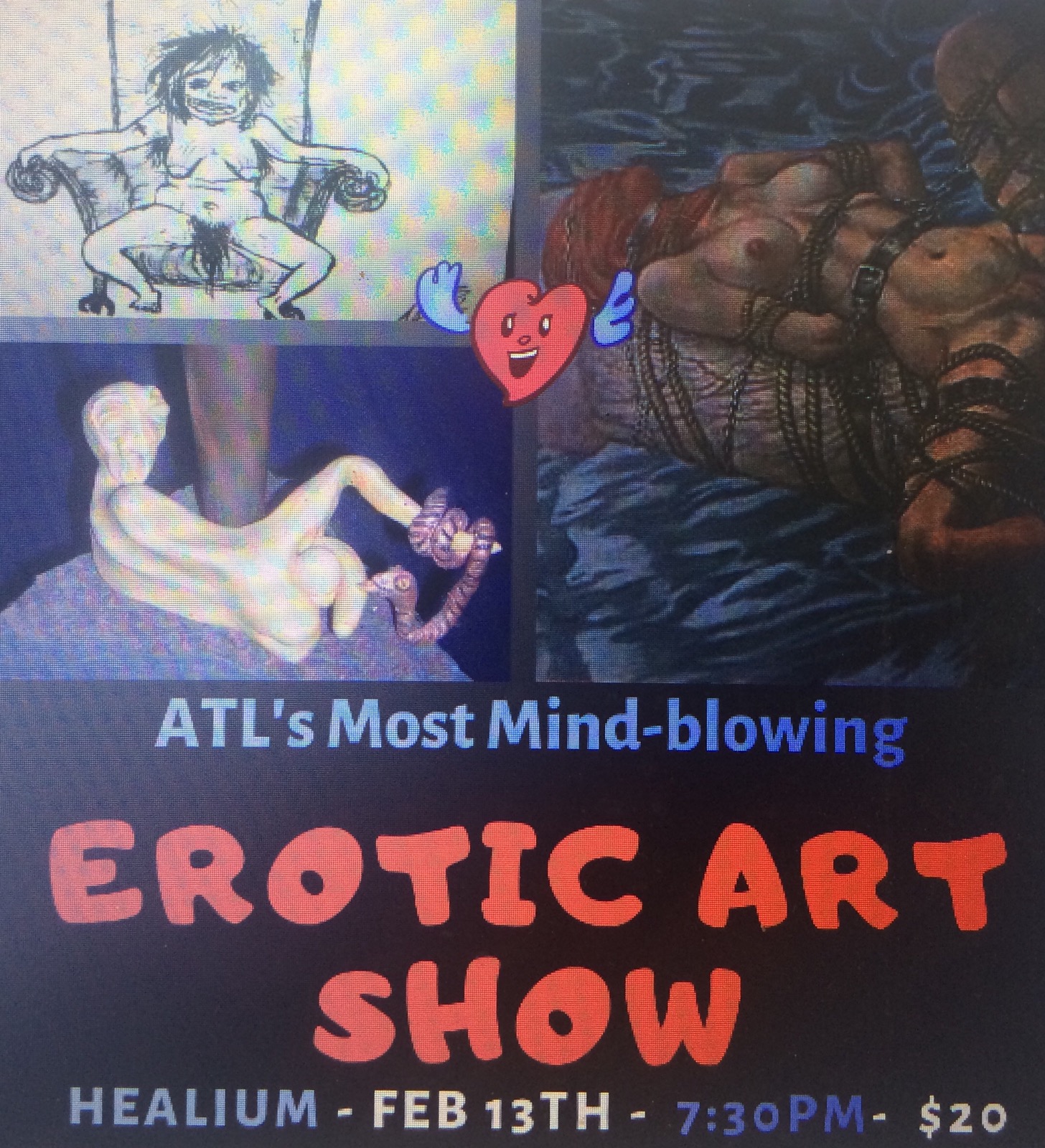
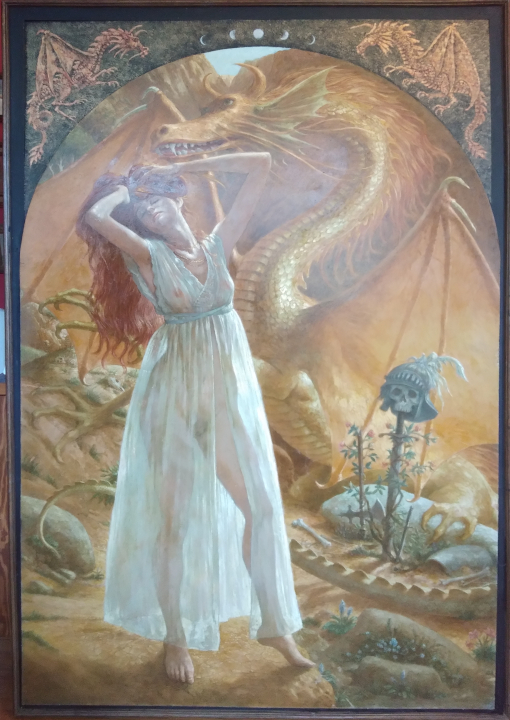
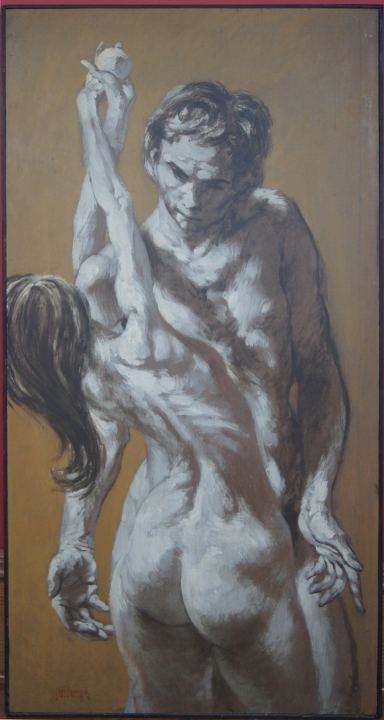
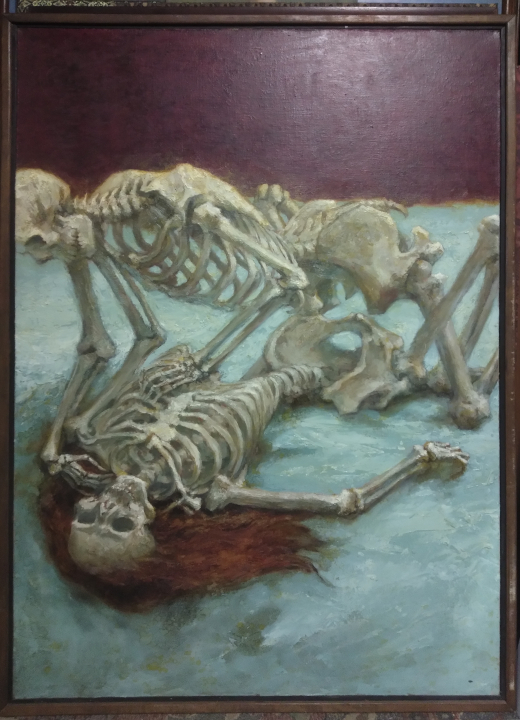
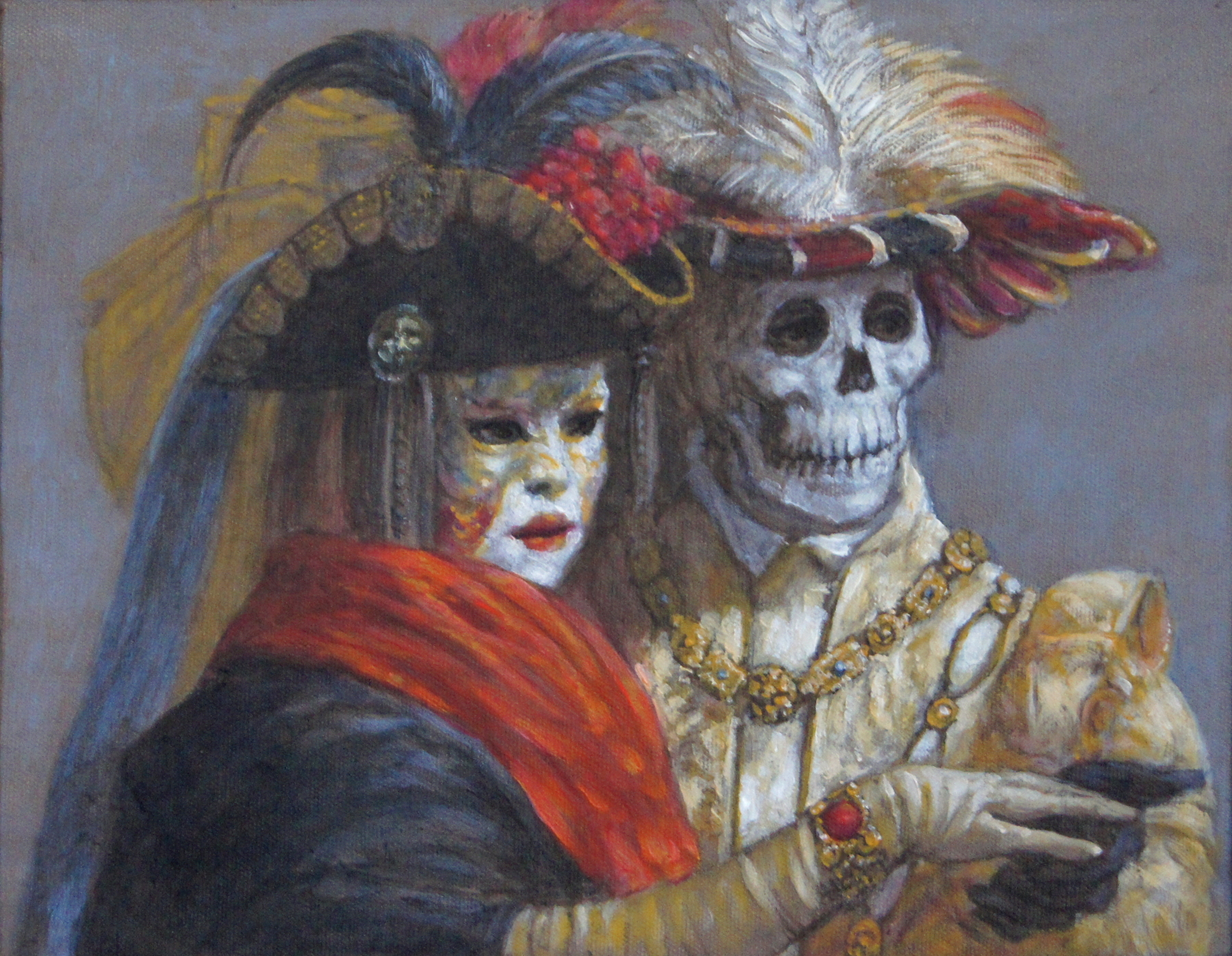
 Porta Della Carta, the entrance to the Doge’s Palace, one of the few of his paintings without a human subject
Porta Della Carta, the entrance to the Doge’s Palace, one of the few of his paintings without a human subject